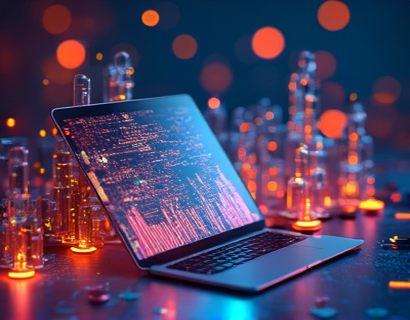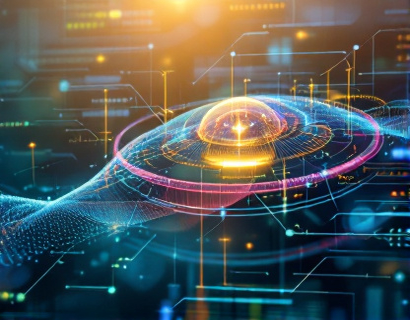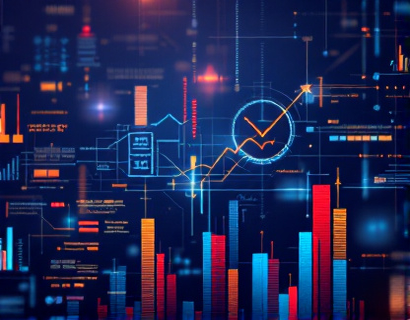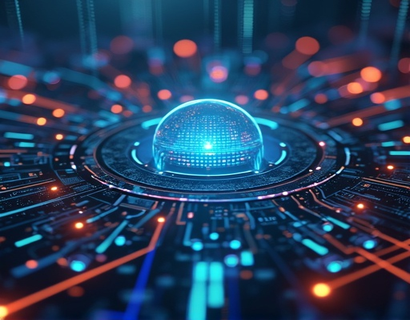Revolutionizing Digital Experiences: The Synergy of AI and Crypto
The intersection of artificial intelligence and cryptocurrency is ushering in a new era of digital innovation, transforming how users interact with technology and financial systems. This fusion is not just about combining two advanced technologies but about creating a seamless, intelligent, and secure user experience that redefines the boundaries of what is possible in the digital realm. As tech enthusiasts and innovators, understanding this synergy is crucial for anyone looking to stay ahead in the rapidly evolving tech landscape.
Understanding AI and Crypto
Artificial intelligence, or AI, refers to the simulation of human intelligence processes by machines, particularly computer systems. These processes include learning, reasoning, and self-correction. AI technologies such as machine learning, natural language processing, and computer vision are becoming increasingly integral to various industries, from healthcare to finance.
Cryptocurrency, on the other hand, is a digital or virtual currency that uses cryptography for security. It operates on a decentralized network, typically a blockchain, which ensures transparency and immutability. Bitcoin, launched in 2009, was the first and most well-known cryptocurrency, but since then, thousands of alternative coins and tokens have emerged, each with unique features and use cases.
The combination of AI and crypto creates a powerful synergy. AI can enhance the functionality, security, and user experience of cryptocurrency systems, while crypto can provide a decentralized and secure environment for AI applications to thrive. This integration is leading to the development of smart, efficient, and user-friendly digital solutions.
Enhancing Security with AI
One of the primary benefits of integrating AI into cryptocurrency systems is the significant improvement in security. Traditional security measures often rely on static rules and patterns, which can be vulnerable to sophisticated cyber attacks. AI, with its ability to learn and adapt, can detect and respond to threats in real-time, providing a dynamic and robust defense mechanism.
For instance, AI-powered systems can analyze transaction patterns to identify anomalies that may indicate fraudulent activity. Machine learning algorithms can be trained on vast datasets to recognize the signatures of malicious behavior, allowing for proactive measures to be taken before a breach occurs. This not only protects users' assets but also builds trust in the cryptocurrency ecosystem.
Improving User Experience through Personalization
AI-driven personalization is another area where the fusion of AI and crypto is making a significant impact. In the realm of digital finance, users often deal with complex interfaces and processes. AI can simplify these experiences by tailoring them to individual preferences and behaviors.
For example, AI can analyze a user's transaction history and spending habits to provide personalized financial advice, investment recommendations, and even automate certain tasks. In the context of cryptocurrency, this means users can receive tailored insights into market trends, optimal times to buy or sell, and customized portfolio management. This level of personalization enhances user satisfaction and engagement, making the crypto experience more intuitive and user-friendly.
Streamlining Transactions with AI
Transactions in the crypto space can be cumbersome, especially when dealing with multiple wallets, exchanges, and smart contracts. AI can streamline these processes by automating routine tasks and providing seamless integration across different platforms.
Smart contracts, self-executing contracts with the terms directly written into code, can be optimized with AI to ensure they function as intended and adapt to changing conditions. AI can also facilitate cross-chain transactions, allowing for smoother interactions between different blockchain networks. This interoperability is crucial for building a unified and efficient digital economy.
Enhancing Decentralized Applications (DApps)
Decentralized applications, or DApps, are a cornerstone of the crypto ecosystem, offering decentralized alternatives to traditional web applications. AI can significantly enhance the capabilities of DApps by adding intelligent features that improve functionality and user experience.
For instance, AI can power chatbots and virtual assistants within DApps, providing users with real-time support and guidance. Predictive analytics can be used to forecast user behavior and preferences, enabling DApps to proactively offer relevant services. Additionally, AI can optimize the performance of DApps by dynamically adjusting resources based on user demand, ensuring a smooth and responsive experience.
Fraud Detection and Compliance
Fraud and regulatory compliance are significant challenges in the crypto industry. AI can address these issues by implementing advanced monitoring and compliance systems. Machine learning algorithms can analyze vast amounts of data to detect suspicious activities and potential violations of regulatory rules.
These systems can flag transactions that deviate from normal patterns, allowing for immediate investigation and action. AI can also help in automating compliance processes, ensuring that crypto platforms adhere to various regulations across different jurisdictions. This not only protects users but also helps crypto businesses operate more efficiently and legally.
Tokenization and AI-Driven Asset Management
Tokenization, the process of converting assets into digital tokens on a blockchain, is another area where AI can add value. AI-driven asset management platforms can analyze market data and token performance to provide insights and recommendations for investors.
These platforms can automate the buying and selling of tokens based on predefined strategies, reducing the need for constant monitoring and manual intervention. AI can also help in assessing the risk and potential returns of tokenized assets, making investment decisions more informed and data-driven. This democratizes access to investment opportunities, making the crypto market more accessible to a broader audience.
Future Prospects and Challenges
The integration of AI and crypto holds immense potential, but it also comes with challenges. One of the primary concerns is the regulatory landscape. As both AI and crypto continue to evolve, regulators are grappling with how to oversee these technologies to ensure they are used responsibly and ethically. Striking the right balance between innovation and regulation will be crucial for the sustainable growth of this synergy.
Another challenge is the technical complexity involved in integrating AI with crypto systems. Developing robust and scalable solutions requires expertise in both domains. However, as the tech community continues to collaborate and share knowledge, these barriers are gradually being overcome.
Looking ahead, the future of AI and crypto integration is promising. We can expect to see more sophisticated AI-driven tools that enhance the security, efficiency, and user experience of cryptocurrency systems. The development of decentralized AI models, where AI algorithms run on blockchain networks, could further revolutionize the space by eliminating single points of failure and ensuring data privacy.
Conclusion
The fusion of AI and crypto is transforming the digital landscape, offering innovative solutions that enhance security, personalization, and efficiency. For tech enthusiasts and innovators, understanding this synergy is essential for navigating the future of connected technologies. As the integration of these powerful technologies continues to advance, the possibilities for creating smarter, more secure, and user-centric digital experiences are endless.











































